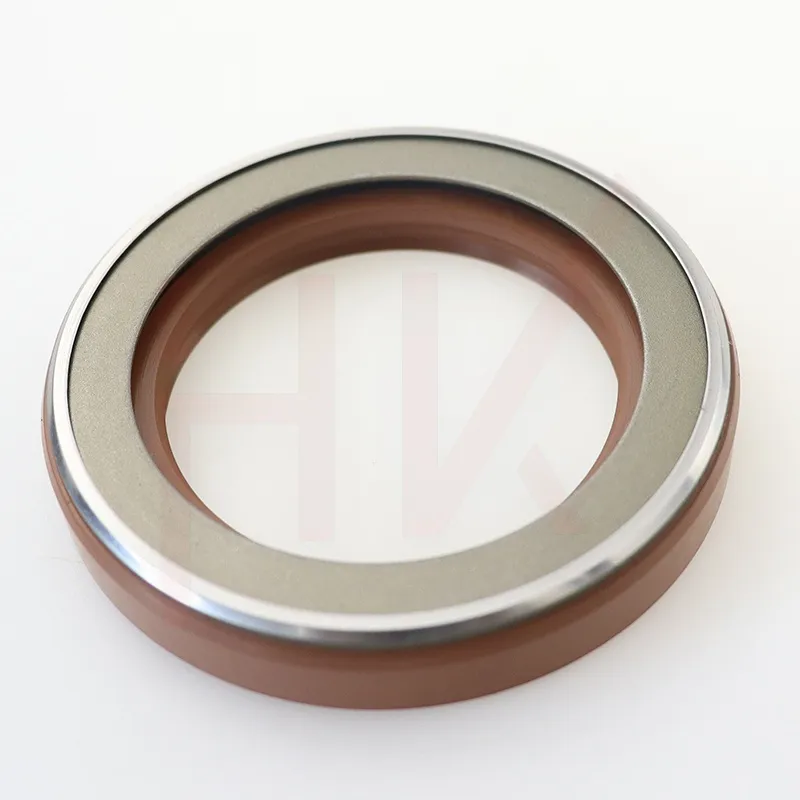Nov . 17, 2024 13:47 Back to list
Hydraulic Cylinder Seal Kit for Effective Repairs and Maintenance Solutions
Understanding Hydraulic Cylinder Repair Seal Kits
Hydraulic systems are fundamental in various industries, including construction, manufacturing, and automotive. They rely on hydraulic cylinders to convert fluid power into mechanical force, making them essential for lifting, pushing, and moving heavy loads. However, like any mechanical system, hydraulic cylinders can experience wear and tear, leading to leaks and decreased performance. This is where hydraulic cylinder repair seal kits come into play.
A hydraulic cylinder repair seal kit typically contains all the necessary components to restore a hydraulic cylinder's functionality. These kits are crucial for maintaining the efficiency of hydraulic systems, preventing unplanned downtime, and extending the life of the equipment. The primary components found in these kits usually include seals, O-rings, and bushings.
Seals and Their Importance
Seals are the most critical part of a hydraulic cylinder repair kit. They prevent hydraulic fluid from leaking out of the cylinder and keep contaminants from entering. Over time, seals can degrade due to factors like heat, pressure, and exposure to chemicals. Common types of seals in hydraulic applications include
1. Rod Seals These seals prevent the hydraulic fluid from leaking out of the cylinder when the piston rod is extended or retracted. 2. Piston Seals These are situated inside the cylinder and prevent fluid from escaping between the piston and the cylinder wall. 3. Buffer Seals These provide additional protection against fluid leakage and help to absorb shocks.
hydraulic cylinder repair seal kit

Choosing the right seal material is essential. Common materials include nitrile rubber, polyurethane, and PTFE (Teflon), each offering unique benefits in terms of temperature and chemical resistance.
Maintenance and Repair Process
Repairing a hydraulic cylinder using a seal kit is a straightforward process, but it requires experience and attention to detail. First, the hydraulic cylinder must be removed from the machine. Once removed, it should be disassembled, and the worn seals must be carefully extracted. Before installing new seals, the cylinder and piston must be cleaned thoroughly to remove any debris or residue that could compromise the new seals’ effectiveness.
Once cleaned, the new seals can be installed. It's crucial to ensure that they are fitted correctly to avoid future leaks. After reassembly, the hydraulic cylinder should be tested under pressure to ensure no leaks persist. Regular maintenance checks are recommended to catch any potential issues early.
Conclusion
In summary, hydraulic cylinder repair seal kits are essential for the upkeep of hydraulic systems. By understanding the components and their importance, operators can effectively maintain hydraulic machinery, reducing downtime and operational costs. Investing in quality repair seal kits and conducting regular maintenance ensures that hydraulic cylinders perform at their best, ultimately leading to increased productivity and longevity of equipment. Whether you’re in construction, manufacturing, or any industry that relies on hydraulic systems, having a reliable repair seal kit on hand can save time and prevent costly breakdowns.
-
Unlocking the Potential of Hydraulic Systems with Essential Sealing Solutions
NewsAug.06,2025
-
Unleash the Power of Your Hydraulic Systems with Our Premium Seal Kits
NewsAug.06,2025
-
Specialized Hydraulic Seal Kits for Breakers, Pistons, and Presses
NewsAug.06,2025
-
Revitalize Hydraulic Systems with Premium Repair and Seal Kits
NewsAug.06,2025
-
Fortify Your Cylinders with Premium Sealing Solutions
NewsAug.06,2025
-
Elevate Hydraulic System Reliability with Specialized Seal Kits
NewsAug.06,2025
-
TCN Oil Seal Metal Ring Reinforcement for Heavy Machinery
NewsJul.25,2025
Products categories
















